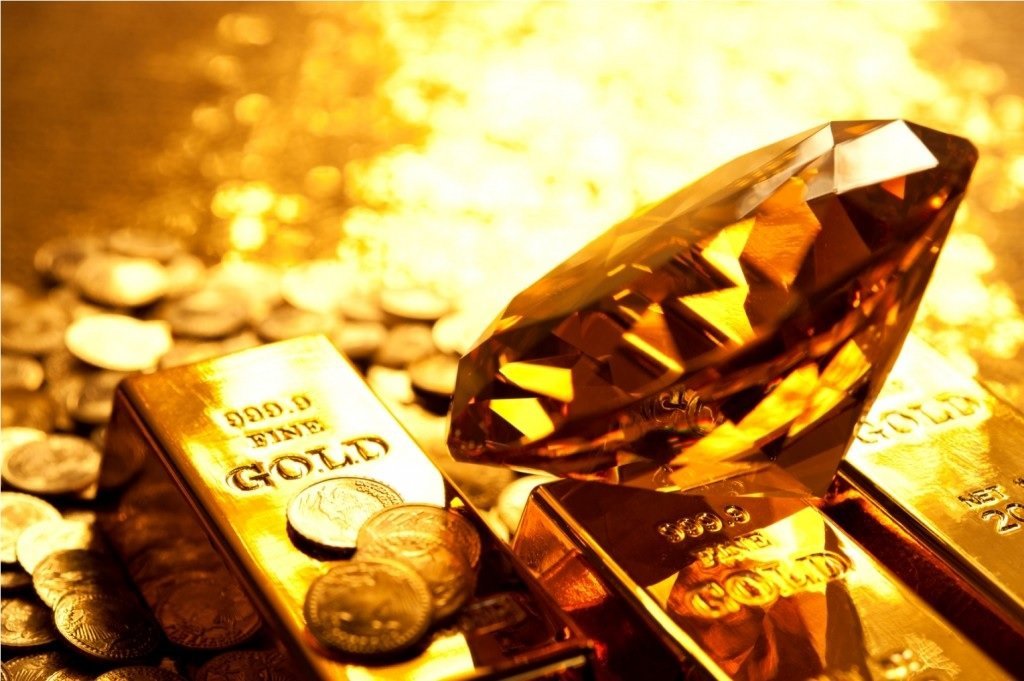Why do people always say, ‘I hate to say I told you so,’ when in fact we know they love it.
So we will not hesitate to remind you that, on April 5, we told you that the price of gold would move steadily higher from about $1,700 at the time.
At this writing, the price of an ounce of gold is at $1,863.
Analysts now say it will break the $2000 barrier this year. The precious metal hit an all-time high of $2,069.40 per ounce in August 2020, driven by risk-off investors who were afraid of the effect of the pandemic.
Now those fears are almost gone, but there is more cash available to be invested, and gold is expected to absorb a good deal of that surplus, according to Edward Moya, a senior market analyst at Oanda Corp.
Here’s the outlook, according to the World Gold Council:
“Gold’s behaviour can be explained by four broad sets of drivers:
• Economic expansion: periods of growth are very supportive of jewellery, technology and long-term savings
• Risk and uncertainty: market downturns often boost investment demand for gold as a safe haven
• Opportunity cost: interest rates and relative currency strength influence investor attitudes towards gold
• Momentum: capital flows, positioning and price trends can ignite or dampen gold’s performance
“Looking ahead, we believe that investors will likely see the low interest rate environment as an opportunity to add risk assets in the hope that economic recovery is on the immediate horizon. That said, investors will likely also be navigating potential portfolio risks including:
- ballooning budget deficits
- inflationary pressures
- market corrections amid already high equity valuations.
“In our outlook for gold, we believe investment demand will remain well supported while gold consumption should benefit from the nascent economic recovery, especially in emerging markets.”
In other words, so long as risk is strong and markets are volatile, many investors will seek the traditional safe harbour of gold.
The recent annual poll of the London Bullion Market supports this view.
“At the beginning of each year the London Bullion Market Association polls a range of respected precious metals analysts in the large banks and independent consultancies for their forecasts for metal prices for the coming year. Historically, the LBMA forecast has been quite accurate.
“The forecast for 2021 says that, according to the consensus outlook from analysts entering today’s precious metals price forecast competition from the London Bullion Market Association, the price of gold will average $1,974 per ounce across 2021, a rise of 11.5 per cent from 2020’s record-high annual average as mass vaccinations worldwide spur a strong economic recovery from the Covid pandemic but central banks and governments continue their unprecedented monetary and deficit-spending stimulus.”
Twelve of the 32 London Bullion Market analysts predict that gold will average $2000 or more across 2021.
“Even if the upcoming inflation report doesn’t show a significant deceleration in pricing pressures, it probably won’t change anyone’s opinion on inflation at the Fed. Wall Street should see investor demand improve for safe havens such as gold, as global tax and inflation concerns intensify,” told Bloomberg.
“Many investors are concerned about the potential risks resulting from expanding budget deficits, which, combined with the low interest rate environment and growing money supply, may result in inflationary pressures,” the World Gold Council said.
“This concern is underscored by the fact that central banks, including the US Federal Reserve and European Central Bank, have signalled greater tolerance for inflation to be temporarily above their traditional target bands. Analysts at Société Générale looked at investment demand for gold, and said that they expect inflows of 100 tonnes this year will be enough to push prices to $2,000 an ounce.”
Along with inflation pressures, the analyst said that one scenario they are watching for is a potential sovereign debt crisis as nations deal with the excessive spending needed to support the global economy devastated by the Covid-19 pandemic.
“If one or multiple sovereign debt crises emerged, we see gold investment rising, but there could be headwinds as the US dollar would then also strengthen,” they said.
The French bank also noted that ongoing geopolitical uncertainty would also be supportive for gold.
The economic recovery may particularly realise in countries like China, which suffered heavy losses in early 2020 before the spread of the pandemic was controlled more effectively than in many western countries. Given the positive link between economic growth and Chinese demand, we believe that gold consumption in the region may continue to improve – the Chinese are among the greatest consumers of physical gold in the world.
Similarly, the Indian gold market appears to be on a stronger footing. Initial data from the Dhanteras festival in November suggest that while jewellery demand was still below average, it had substantially recovered from the lows seen in Q2 of last year, according to the World Gold Council report.
Overall, gold may be expected to rise past the $2,000 barrier, but not to jump much higher. The economic recovery will be volatile, but the bigger trend is clearly one of an improved economy. That tends to dissipate investment in gold.
Unless, something goes wrong. In which case, the sky is the limit for investment in gold.






Click here to change your cookie preferences